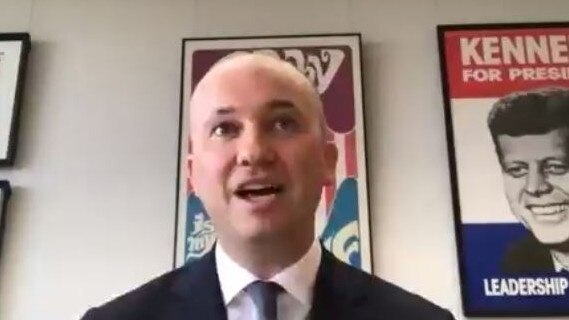Subsidies drain power from the electricity market

Speakers included US Democratic Party activist Audrey Zibelman, who came to Australia as a refugee from the 2016 Trump victory and is returning as a Google executive to help refill the Washington swamp. Zibelman heads the Australian Energy Market Operator, which she transformed into a policymaking body fostering increased renewable energy supplies by spending $17.4bn on new transmission in addition to the $10bn for Snowy pumped storage. She assisted in designing the new NSW subsidy package.
Also featured was Kerry Schott, who was picked by Malcolm Turnbull to head the Energy Security Board, which is at the apex of the electricity industry’s dozen regulatory agencies. Schott’s energy industry experience includes having sold, for $1m, the NSW government power station Vales Point, which now makes annual profits of $60m.
Among the many openly speaking for the renewables lobby was Anna Skarbek of ClimateWorks. Skarbek raised the goal for renewables supply of 100 per cent of electricity to 700 per cent, arguing Australia could soak up sunlight and export it, a delusion assisted by a mirage involving its conversion into hydrogen power.
Politicians included Victoria’s Lily D’Ambrosio, who has pioneered a damaging subsidisation of renewable energy to prove the ALP’s green credentials and save inner-city seats. The state’s spendthrift 2020 budget provides even more subsidies.
But NSW Energy Minister Matt Kean is the new standard bearer for government control over the industry. Last week he pushed through the NSW parliament a package of imposts on electricity consumers and central planning machinery. This is designed to leverage $32bn in new private investment in renewables and the transmission lines they will require.
Kean maintains a game changer is that the cost of renewables has plummeted. But not one of the 24 gigawatts of wind, grid solar or rooftop solar would have been installed without a subsidy. Nor, as the state’s new legislation demonstrates, would any future supply be built without assistance.
Kean claims these regulations will lower prices. The assumption is subsidised renewable power will force down prices of all electricity supplies, with non-subsidised coal-fired plants running at a loss but remaining operating. But 20 years of such policies brought the opposite outcome. Seven years ago financial losses sustained by coal-fired plants as a result of competition from subsidised renewables forced the Northern and Hazelwood power stations to close. The outcome was a doubling of wholesale prices.
Kean thinks laws preventing power stations closing will prevent a reoccurrence of this but it is doubtful firms could trade while insolvent. Moreover, industry sources suggest the intrusion is so great investors might take legal action against the government. AGL’s response to Kean’s plans was to shelve new investments.
These developments have led Kean to give voice to his barely disguised socialism and fulminate against Big Business that refuses to cop losses by doing the government’s bidding. Kean copped an earful from federal Energy Minister Angus Taylor, who recognises the precarious nature of a renewables-rich energy supply in an electricity system where supply and demand must be precisely balanced for every 86,400 seconds a day. The unpredictable variability of wind and solar adds further expenses to their intrinsic high cost. Indeed, negative prices are almost a daily occurrence and the difficulties are so great that the market manager is spending consumers’ money to switch off subsidised surplus wind and solar.
That said, the federal government’s policies are not markedly different from those of state governments. The commonwealth retains the subsidies on renewables that have created the present high costs and unreliability, while putting taxpayer dollars into speculative funding of hydrogen and other new technologies that might replace coal.
Twenty years ago, soon after the dawn of the national electricity market, the divestiture of political interventions and privatisations that came with this produced a world-beating electricity supply system. The only way to restore this is through a market unpolluted by subsidies, regulations and directions.
Sadly, the replacement of market forces by subsidies means government intervention is advocated even by backbenchers Matt Canavan, Craig Kelly and Labor’s Joel Fitzgibbon, who recognise the low cost and reliability advantages of fossil fuels. Ranged against these are powerful lobbies advocating for closure of fossil-fuel generation — in some cases out of environmental zealotry and in other cases to benefit from subsidies.
Alan Moran has written chapters on Australia in five global compendiums on energy and in several Australian works, the latest being Keeping Australia Right. His most recent book is Climate Change: Treaties and Policies in the Trump Era.



Last week’s virtual Climate and Energy Summit screened politicians, industry leaders and bureaucrats, many of whom have been responsible for destroying the world’s most competitive electricity industry. The sledgehammer has been subsidies through regulations and government spending, which are running at $7bn a year.